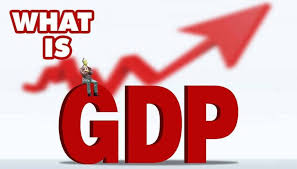What is GDP? / GDP Stands for?

GDP stands for Gross Domestic Product that is used to estimate the size of the US economy. It is calculated as the value of all goods and services produced in the US. In 2019, GDP was $21.4 trillion.
GDP measures the amount of value added in the production process. There are two ways of measuring the production of a given product. We can look at the value at final sale or we can look at how much value was added at each stage of production. Imagine the production of a loaf of bread. A farmer produces the wheat and sells it to a bakery. The bakery takes the wheat and produces a loaf of bread that it sells to a grocery store. The grocery store then sells it to the final consumer. The loaf of bread may sell for $3 to the final consumer (and be counted as $3 in GDP), but the $3 can also be broken down at each of the production process. The $3 equals the total of the amount of value that was added at each stage of production.

What is the history of measuring GDP?
The measure was created in 1934 for a report to Congress by an economist at the National Bureau of Economic Research (NBER). It was then adopted internationally as the standard for measuring economies in the years during and following World War II.
Most governments track and publish GDP data through a national statistical agency. In the US, GDP is calculated by the Bureau of Economic Analysis, using data collected by various governmental and private sources, including the Census Bureau, Internal Revenue Service, Federal Reserve, and Bureau of Labor Statistics, among others.
While GDP estimates vary from various international agencies such as the International Monetary Fund, the World Bank, and the United Nations, the United States is generally regarded as having the largest GDP of any country in the world.








